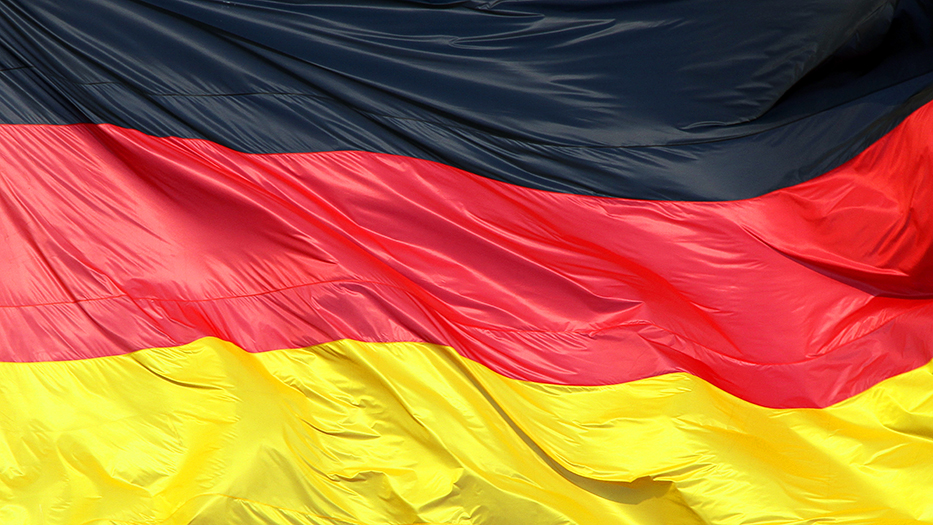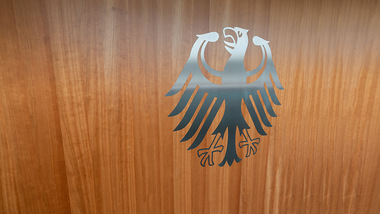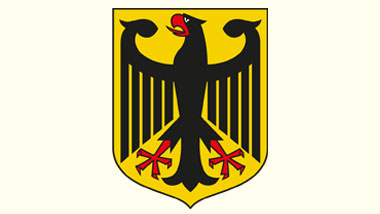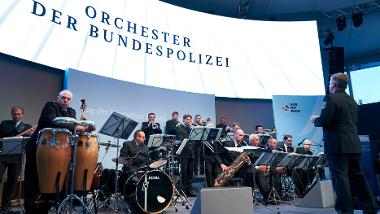Federal flag
Article State symbols
The federal flag is striped black, red and gold.
The German colours date back to the liberal national movement of the 19th century. The patriotic German Students’ Association founded in Jena in 1818 chose these colours in the belief that they were the colours of the old empire.
The extent to which the red-trimmed black uniforms of the Lützow Free Corps from the wars of lib-eration (1813-1814) also figured in this choice is a matter of dispute.
The new tricolour clearly established itself at the Hambach Festival (1832), a gathering of approxi-mately 40,000 democratically and nationally minded students and professors, and in the March revolution of 1848. On 9 March 1848, under the pressure of the revolutionary events, the Federal Diet – the assembly of the envoys of the individual states of the German Confederation at that time – proclaimed black, red and gold the federal colours. After the revolution failed, the flag, too, initially disappeared as a symbol of the state as a whole.
For the North German Confederation (1867-1871), Federal Chancellor Otto von Bismarck ordered the creation of a new black, white and red tricolour as the flag of the navy and the merchant marine. It was adopted as the national flag of the German Empire in 1892.
Not until the Weimar Republic were the colours black, red and gold recognized as the Reich colours and enshrined as such in the constitution. A concession was made to the adherents of the colours black, white and red in the case of the merchant flag: It was black, white and red and bore the Reich colours in the upper inside corner. From this compromise it was clear that the issue of the flag was still unresolved and remained on the political agenda. It developed into an ongoing dispute that even brought down the Reich government in 1926.
In 1935, the National Socialist German Workers’ Party (NSDAP) forced its party’s flag on the nation. Under the Reich Flag Act, the swastika flag was declared the national flag. To this very day, the swastika flag remains a symbol of Nazi tyranny.
After the end of World War II, it was only logical and fitting that the newly founded Federal Republic of Germany adopt the old colours of the 1848 revolution and the Weimar democracy.
A speaker in the Parliamentary Council put it this way: "The tradition of black, red and gold is ... unity in freedom. This flag should serve as a symbol to us that the libertarian idea of personal freedom should be one of the foundations of our future state.”
The flag in the German Democratic Republic
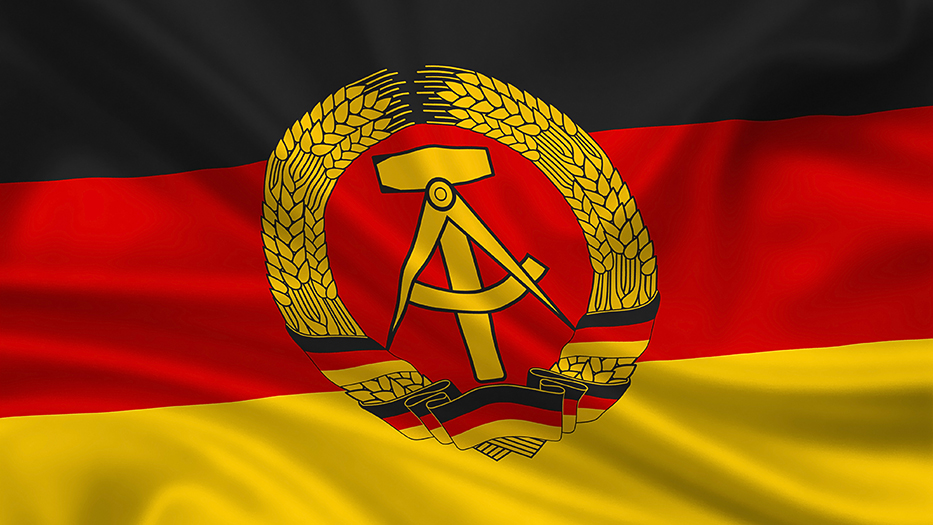 The flag in the German Democratic Republic (Larger version opens in new window)
The flag in the German Democratic Republic (Larger version opens in new window)
Source: aldorado10 / GettyImages
In Article 2 of its first constitution of 7 October 1949, the newly founded German Democratic Republic (GDR) likewise adopted these colours, thereby documenting its commitment to national unity – albeit under socialist conditions. From 1959 onward, it emphasized its separate statehood by incorporating its coat of arms (hammer and compasses surrounded by a wreath of ears of grain) into its flag.
Until as late as 1964 the two German states fielded a joint team at the Olympic Games, and even until 1968 – although by this time they had different state flags – they continued to compete under a common Olympic flag: black, red and gold with the five Olympic rings.
During the peaceful revolution of 1989, many people in the GDR and East Berlin underscored their demand for reunification by cutting the coat of arms out of GDR flags. Under the Unification Treaty of 31 August 1990, Article 22 of the Basic Law (the constitution of the Federal Republic of Germany) went into effect for the new eastern German states as well. At midnight on 3 October 1990, the black, red and gold flag was hoisted in front of the Reichstag building in Berlin.
Details concerning the design and display of the federal flag are regulated in the Directive concerning the German flags. The uniform rules for flag displays at official federal buildings are laid down in the Federal Flag Code as amended on 22 March 2005. Private individuals are not permitted to display the federal institutions flag (Section 124 of the Regulatory Offences Act); anyone, however, may fly the federal flag.

